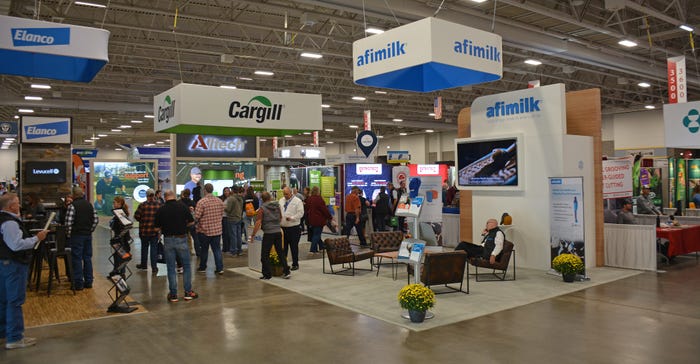
World Dairy Expo was back in full swing this year with large crowds, nice weather and a fresh optimism throughout the Alliant Energy Center grounds, largely thanks to this year’s high milk prices.
Dozens of companies showcased new items ranging from boluses that can detect mastitis and milk fever infections; a new farm solar thermal system that can provide heat and hot water; and new silage covers marketed as the “strongest, most advanced covers available.”
Here’s a taste of the items introduced at Expo:
Get ahead of disease. Stefan Scherer, CEO of Smaxtec, says the company’s new Smaxtec TruRumi allows a user to get ahead of disease problems before it is too late.
It does this by using a bolus that measures body temperature, movement and rumination. Scherer says the system can detect diseases such as mastitis and milk fever up to four days before clinical signs emerge, “enabling the farmer to apply simple treatment to help prevent sickness from breaking out,” he says.
A bay station monitors data and sends it to a cloud application that is available to a farmer at any time. “The return on investment is reduced medication, more milk and less labor, and more efficient work time,” Scherer says.
Find more information at smaxtec.com.
See animal issues remotely. CattleEye is being marketed as the world’s first hardware-independent autonomous livestock monitoring platform.
Terry Canning, CEO and co-founder of the company, says the heart of the system is cameras mounted in and around the milking parlor that can track an animal’s movement once it exits the milking parlor. The images are fed into a “neural network” that provides insights that are remotely fed back to the dairy.
Canning says it provides a score to the producer that is an indication of how the cow is walking. “From that, a dairyman gets information on specific cows that need intervention,” he says.
Lameness detection is the first offering from the company through the system, but Canning says they are working on a body condition score calculator that will be released in the next year. The system has been available for nine months and is tracking 50,000 cows in the U.S. and U.K. Canning says the company is also working on solutions for the poultry and beef industries.
For more information, visit cattleeye.com.
Detect mastitis. The UdderHealth Mastitis system by EIO automates mastitis detection on rotaries.
It does this through a thermal sensor installed at the entrance of a milking rotary that captures an infrared image of the udder, associates it with the cow’s ID, and then processes the data in real time to alert farmworkers of possible mastitis issues. It can also be integrated in existing dairy farm software herd management systems, says Tamara Lee, CEO of EIO.
“The whole focus is creating a tool that is simple, easy to install and integrates seamlessly” in a rotary, she says. It’s not cheap. The initial installation and training fee is $25,000, plus hardware. There is then a $2-per-cow subscription fee, although Lee says they are looking at tiered pricing based on farm size and length of contract.
For more information, visit eiodiagnostics.com.
Click on the slideshow to see other new products featured at World Dairy Expo.
About the Author(s)
You May Also Like






